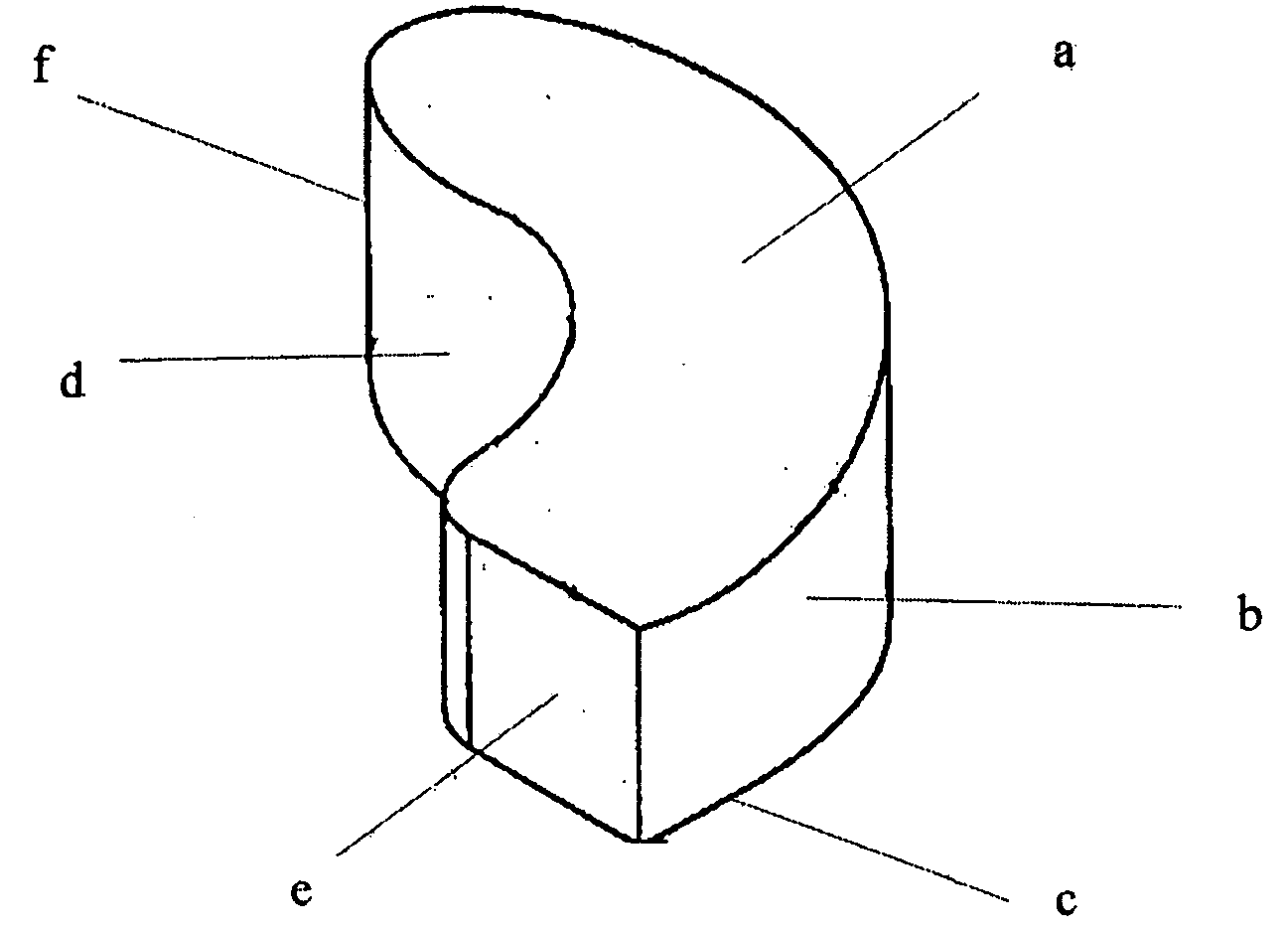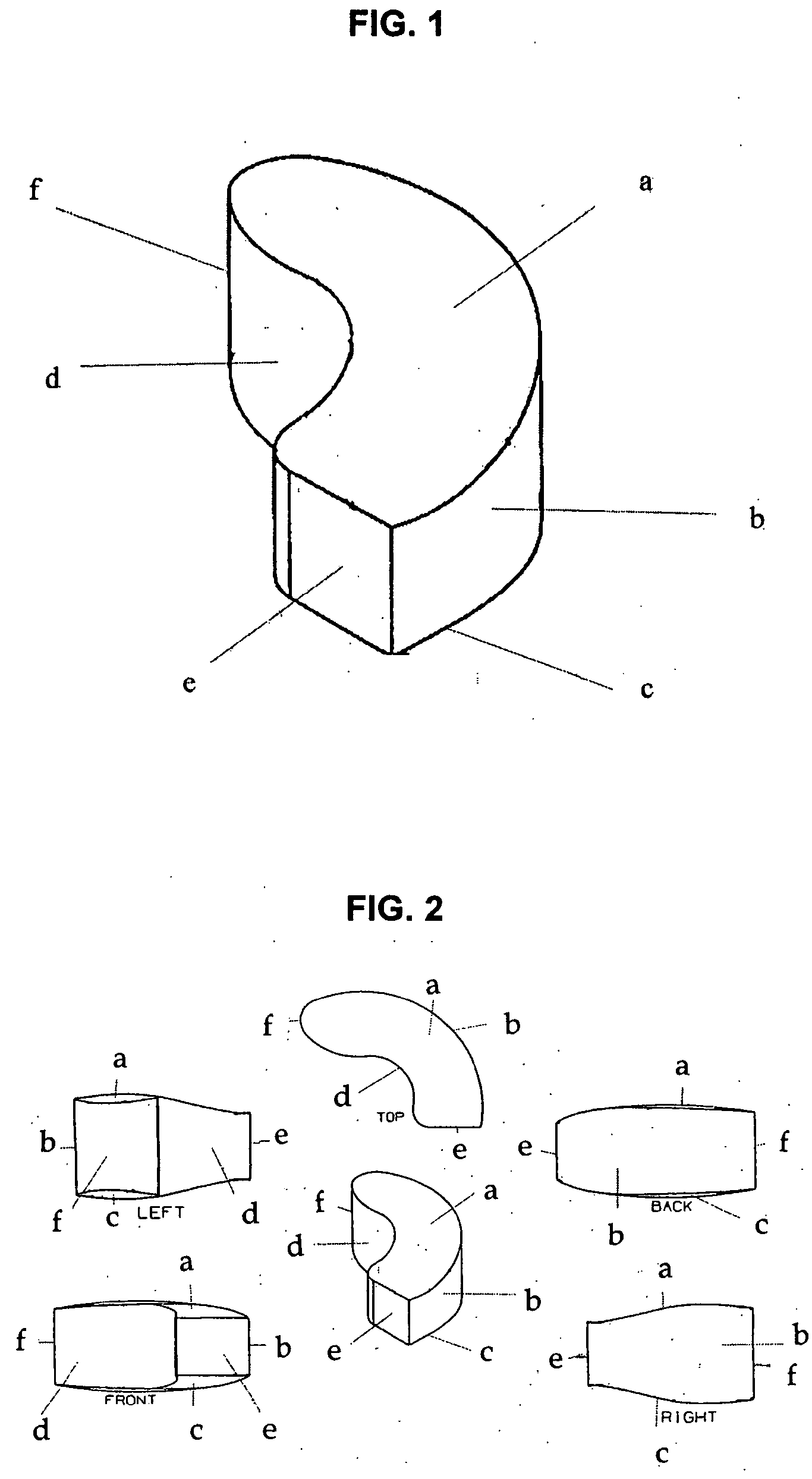Interbody spinal device
- Summary
- Abstract
- Description
- Claims
- Application Information
AI Technical Summary
Benefits of technology
Problems solved by technology
Method used
Image
Examples
example 1
Fabrication of the Implant
[0066] The implant may be fabricated by computer-aided design and computer-aided manufacturing methods of a suitable biocompatible, biodegradable polymer such as PCL. A block of PCL may be reduced to the desired shape and size by suitable machining methods and then sterilized by known methods for implantation. Alternatively, the implant may be cast or injection-moulded or formed by other methods known in the art for polymers. A person skilled in the art of polymer science will appreciate that many alternatives may be used to fabricate the device of the present invention to possess desire levels of density, porosity or rates of biodegradation.
[0067] The surgeon implanting the device may choose from a variety of sizes and shapes. Alternatively, one or more precision implants may be custom-made for each patient based on diagnostic images obtained prior to the surgery. The implants may then be further treated to encourage new bone growth (osteoinduction) by e...
example 2
Implantation of the Device
[0068] A person skilled in the art in the field of orthopaedic surgery, particularly one specializing in the spine, will appreciate that many variations may be made in the procedure to implant the device of the present invention without departing from the scope of the present invention.
[0069] The surgery is performed under general anaesthesia. The patient is positioned prone on the operating table. Care is taken to pad bony or exposed areas to avoid under pressure on the soft tissues and neurovascular bundles. There should be no compression on the abdomen to reduce epidural vein congestion. The operative field is cleaned with a suitable disinfectant, and then draped.
[0070] The interbody spinal device is designed for insertion through a posterior or postero-lateral surgical approach to the spine; and thence via a unilateral trans-facetal approach to the disc, although its shape and dimensions will allow its insertion through the anterior, antero-lateral, ...
example 3
Selected Biomechanical Test Results
[0074] Biomechanical tests were performed on 10 cadaveric specimens. The specimens were tested in three configurations, (1) intact; (2) following removal of intervertebral disc (before implant); and (3) following implantation of the device of the present invention. The stiffness values of the specimens were calculated and the data were normalised to that of the intact specimens. The results are as shown in the Table 1 below:
TABLE 1Lateral BendingFlexionExtensionAxial RotationBefore Implant80%71%55%78.5%After Implant87.5% 92%67% 86%
[0075] The results showed that following removal of the intervertebral discs, the stiffness of the specimens in the four modes of testing, ie lateral bending, flexion, extension and axial rotation were reduced. After implantation of the device of the present invention, the stiffness of the specimens improved as shown in the above Table 1.
PUM
| Property | Measurement | Unit |
|---|---|---|
| Fraction | aaaaa | aaaaa |
| Fraction | aaaaa | aaaaa |
| Fraction | aaaaa | aaaaa |
Abstract
Description
Claims
Application Information
 Login to View More
Login to View More - R&D
- Intellectual Property
- Life Sciences
- Materials
- Tech Scout
- Unparalleled Data Quality
- Higher Quality Content
- 60% Fewer Hallucinations
Browse by: Latest US Patents, China's latest patents, Technical Efficacy Thesaurus, Application Domain, Technology Topic, Popular Technical Reports.
© 2025 PatSnap. All rights reserved.Legal|Privacy policy|Modern Slavery Act Transparency Statement|Sitemap|About US| Contact US: help@patsnap.com



